Are you a Quiet Speculation member?
If not, now is a perfect time to join up! Our powerful tools, breaking-news analysis, and exclusive Discord channel will make sure you stay up to date and ahead of the curve.
I’ve been very overt lately about my newfound Magic finance strategy: sealed product. After moving on from a large portion of my Vintage and Old School collection, sealed product, such as booster boxes, was one asset type in Magic that still gave me that small bit of excitement when it arrived at my home. Holding a booster box of Visions, Magic’s newest expansion when I first started playing back in 1997, was a cherished moment of nostalgia I’m glad I could experience again in 2022.
Taking a step back, though, I realize that booster boxes aren’t the only sealed product investment vehicle worth tracking. A recent Card Kingdom sale on Aether Revolt bundles got me thinking about the fat pack (more recently, bundle) product. Could these be even better investments than booster boxes? What are the pros and cons of bundles?
Bundles and Fat Packs: A Brief History
The original fat pack (sometimes referred to as “phat pack” because the 1990s were awesome) was released as an alternate way to market Mercadian Masques product. The bundle itself included a starter deck, three booster packs, two premium cards, a player’s guide, and my personal favorite, the Mercadian Masques novel.
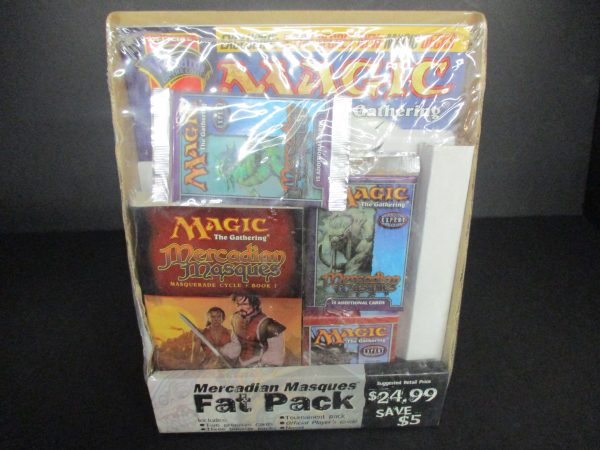
That’s a whole lot of value for $24.99! Of course, if you want to purchase one of these original fat packs now, you’re looking at a much higher price point—more on that later.
Since their introduction, fat packs and bundles have gone through numerous iterations and evolutions over the years. Different variations have included other numbers of booster packs, novels, player’s guides, deck boxes, land packs, premium cards, spindown dice, and more. Each product is designed to give a player a nice immersive experience into a set without demanding the steep price point of an entire booster box.
In all honesty, fat packs and bundles are my favorite ways to enjoy the paper version of a new set because it strikes the perfect balance of product variety, number of booster packs, and price point. I have acquired a few different Magic novels over the course of the game’s history through these fat packs—I figured if I wanted to buy the book anyway, and those were $7.99 or something, then I’d get a significant discount on the booster packs as a result.
Interestingly, the novels have held their prices fairly well over the years, some even appreciating a little bit. I could do a whole separate article on Magic novels, however, so I’ll save that for another time.

Some Price Trends
Like booster boxes, fat packs and bundles tend to appreciate in price over time. I’ve seen various postings on the sealed product Facebook group where people showcase (or sell) their collection of fat packs and bundles.
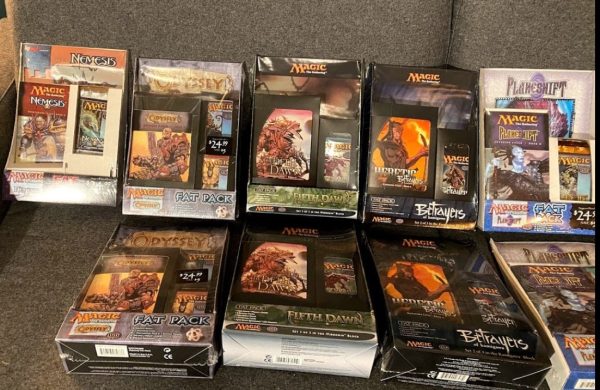
They make for impressive display pieces. Of course, I would never crack open an old fat pack—the EV is going to be absolutely abysmal. These are strictly display and collector pieces now. Even if you wanted product to draft, you’d be better off purchasing a booster box or loose packs.
Why do I make this claim? Simply put, these old fat packs are worth more than the $24.95 their MSRP label advertises! Take a look at the asking prices for the FB sales post I pulled this image from. Keep in mind this post is a year old, so prices have likely climbed since then.
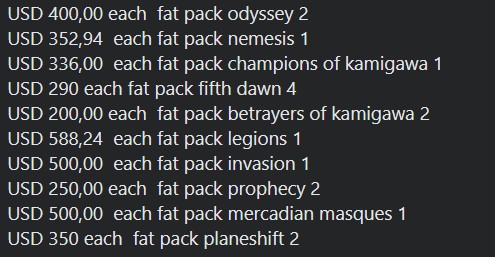
Talk about expensive! Hopefully, by now you see my point about the purpose of these sealed products. Quickly glancing at the numbers, it appears these fat packs are worth about 1/3 the cost of the corresponding set’s booster box prices. I’m not sure why that ratio is where things settled, but that’s a reasonable rule of thumb.
The exception would be Zendikar fat packs, which retail for close to $1000. I guessed it was because of the sealed pack of full-art basic lands that are included. A friend on Facebook messaged me, however, and reminded me that OG Zendikar fat packs included booster packs from the set's first print run. This means they qualify for the hidden treasures program that Wizards of the Coast implemented in this set. I suppose a chance at opening a Black Lotus is enough reason for the higher price point!
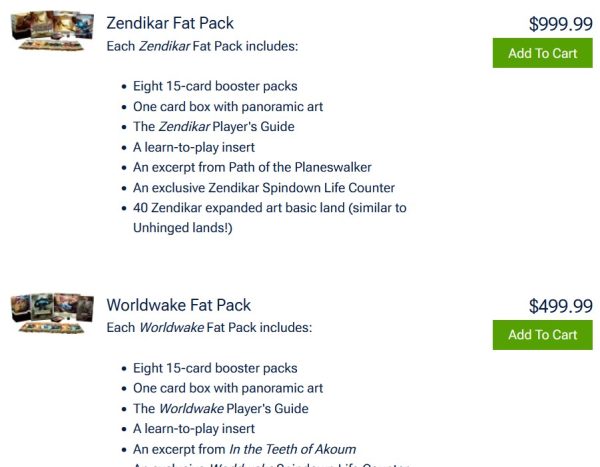
A New Investment Idea?
The numbers are quite compelling for older fat packs—clearly purchasing these at $24.95 (MSRP) 20 years ago would have yielded a hefty profit. Can we rely on this trend to continue going forward, however?
To answer this, I’m going to look at some of the more recent, less expensive fat packs and bundles to see what pricing trends look like. To start, I browsed Card Kingdom’s inventory of the cheapest fat packs—note that fat packs converted into bundles starting with Kaladesh, so by searching Card Kingdom for “fat pack” I’m essentially browsing all products that were released prior to Kaladesh.
What do you think the cheapest ones are? If you guessed Magic Origins, Born of the Gods and Dragon’s Maze, you’d be right! These still retail for just $39.99, not much above MSRP.
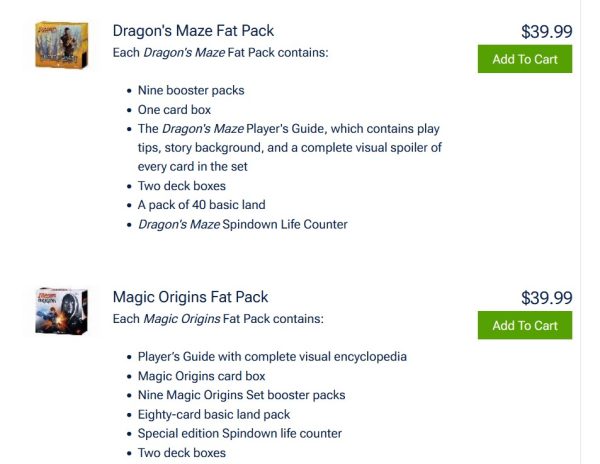
Is this proof that these are now horrible investments? Definitely not! It’s no secret that these three sets are some of the worst in Magic’s history, at least from an EV and investment standpoint. You can still get booster boxes of these sets for under $150, even after many years since their release. These products were disappointments by my account, so it’s no surprise there’s little demand for their corresponding sealed products.
To get a better snapshot of what returns look like on newer fat packs, we need to change our Card Kingdom search to “bundle” to browse those released since Kaladesh.
Are there still inexpensive bundles? Of course—all the more recent bundles from 2021-2022 are relatively cheap. However, there are some that are just a couple of years old that have doubled in price since their initial release.
Take Ikoria, for example. Booster boxes of this set can still be found for around $115, yet the TCGplayer market price for an Ikoria bundle is over $70! You don’t even get one-third of a booster box worth of packs in a bundle, yet they cost over half the price of a booster box. Rivals of Ixalan bundles are at a similar price point, around $75. Booster boxes of the set are about double that, nearly $150.
The same trend is found for sets like Throne of Eldraine, Kaldheim, and Guilds of Ravnica. It seems that bundle prices for sets that were released just a couple of years prior tend to appreciate fairly consistently, especially if you consider bundles from Standard-legal sets can often be found at a discount on TCGplayer—Streets of New Capenna bundles can be had for as low as $25! That can make for a particularly attractive entry point.
Before You Dive In…
Is this it? The perfect Magic investment?

Whoa, hold your horses! There are some important drawbacks to investing in bundles that I need to touch on before letting you decide for yourself if there should be a collection of bundles and fat packs in your Magic collection.
First and foremost, there’s the timeline and opportunity cost. Investing in sealed product is akin to investing in savings bonds. They’re not likely to lose much value in the long run (though it’s not impossible), but they also don’t offer the flashiest of returns. Seeing a Mercadian Masques fat pack appreciate from $25 to $500 in 23 years appears exciting, but I don’t foresee a similar return for a bundle purchased today. There’s too much premium in the originality and lower print run of the older sets to expect comparable returns in 2022 and beyond.
You very well may end up buying 10 Streets of New Capenna bundles for $25 each, only to sell them for $50 each 5 years from now—hardly an impressive return, especially when you take into consideration shipping and handling costs. These bundles aren’t the most economical to send around the country after all, and a $15 priority mail shipping bill can really eat into profit margins.
To make it worthwhile, you really need to see your bundle appreciate at least $40 or so in price. For example, if you had purchased a Throne of Eldraine bundle for $30 a few years ago and could now sell for $70, I’d say that’s worth it. Even after shipping and some fees, you’d probably net a solid $20 profit—multiply that by ten, and you have an endeavor worth thinking about.
What if you end up accidentally buying a bunch of bundles from a set like Dragon’s Maze, and there’s virtually no appreciation over a few years? I guess you need to cut your losses, or else crack them open for some nostalgia on a rainy day. There is a risk that this may happen, but if your entry point is low enough then at least you won’t feel so awful if you have to go this route.
At least you have a beautiful display piece (assuming you have room on your shelves) in the meantime. Bundles look great lined up on a shelf, and also make for great gifts in a pinch (image from another collector on Facebook).
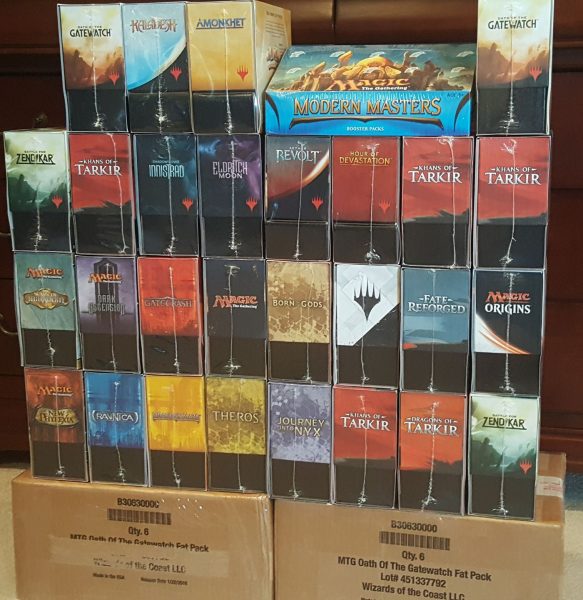
Even if you don’t break the bank investing in these, it’s hard to come up with a 100% losing scenario when buying a bunch to sit on. Just don’t waste your time with Dragon’s Maze.
Wrapping It Up
If I’m in the market for a few booster packs of the latest set, I still consider bundles as a fun option. It’s a nice combination of booster packs, a quality box, a spindown die, and other goodies to justify the price point.
When it comes to investments, however, bundles demand a good bit more research and scrutiny. While historical “phat packs” have performed very well financially, that doesn’t guarantee modern-day bundles to offer the same stellar returns. That said, some more recent releases seem to have already doubled in value after just a few years. Clearly, there is something to this strategy that merits consideration.
It may just boil down to picking the right sets to purchase and finding the right entry point. This can be tricky since we don’t always know what sets will do well a couple of years after their release. My best advice here would be to diversify. If you want to pursue bundles as an investment strategy going forward, then make sure you time your purchases well to take advantage of markdowns and discounts. Often times a set’s bundles will be discounted 6-12 months after its release. Streets of New Capenna bundles are especially cheap right now.
Lastly, a word of advice would be to try and purchase a few at a time to save on shipping. When Card Kingdom marked Aether Revolt bundles down to $29.99 a couple of weeks ago, I knew I wanted to take advantage—these sell for nearly $50 on TCGplayer. However, buying just one would not be worthwhile because I’d be paying north of $40 after shipping. To bring my cost basis down, I purchased four. In hindsight, I probably should have gotten even more, but I didn’t want to go too deep on a single set out of fear I picked a stinker like Dragon’s Maze. It’s about balancing that risk and reward.
Perhaps that’s a good reason to consider bundles as a component of one’s Magic investment strategy. Simply put, it adds some diversification to your portfolio with low risk and a modest reward. You won’t make a fortune on these, I suspect, but there are definitely worse places to park some money for a few years—especially if you have some shelf space to spare!





